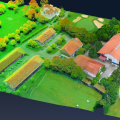
A new portal will be launched this week that will provide a resource for spatial information about Australian plants and animals.
The spatial portal is the public face of the $64.7m Atlas of Living Australia initiative, funded over six years by the Australian Government and fourteen other bodies.
A species map maps the occurrences of species as points or as numbered cluster markers.
With the spatial portal users can map the distribution of a species, identify what species live in an area, map and list all occurrences of all species within an area, map any formally named geographic features, and print maps in a range of formats.
Lee Belbin, recently appointed team leader for Geospatial Data Management in the Atlas of Living Australia, said much of the data that the atlas will be delivering will have a spatial component.
“An atlas is inherently spatial,” he said. “This places great emphasis on developing a ‘spatial portal‘ that is intuitive to use and effective in delivering and capturing a wide range of information about Australia’s living things.”
Belbin added there is also a need to bring together in the portal a range of ‘environmental’ data that will help to add value to the living data. These layers could be used for analysis or more simply as base maps.
For example, mean annual temperature could be used to help determine where a species could be found, or a layer such as soil classification could be used as a base map for displaying observations of a plant species.
Belbin says hundreds of millions of dollars have been spent on the collection of biological data by federal and state governments, and the project aims to bring these data together in an integrated way.







